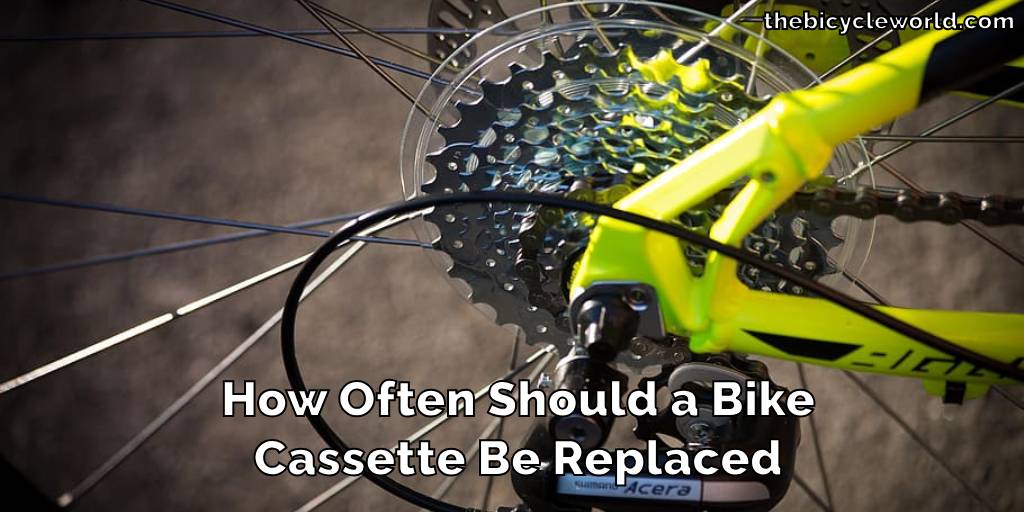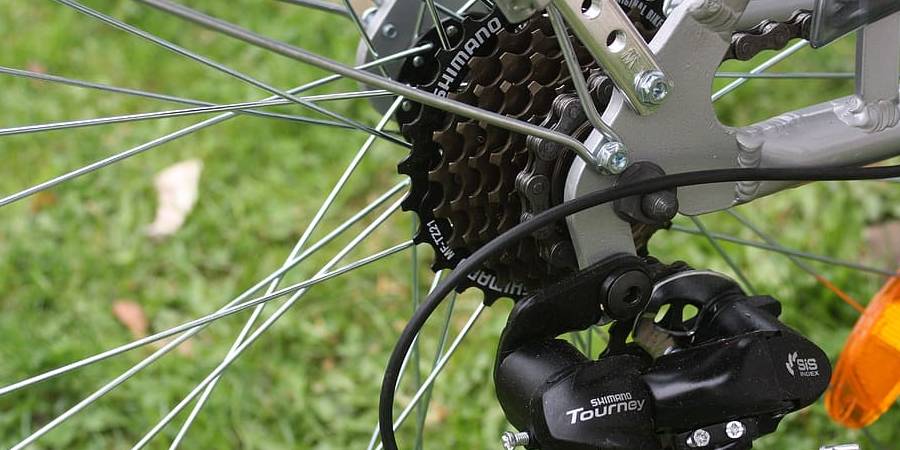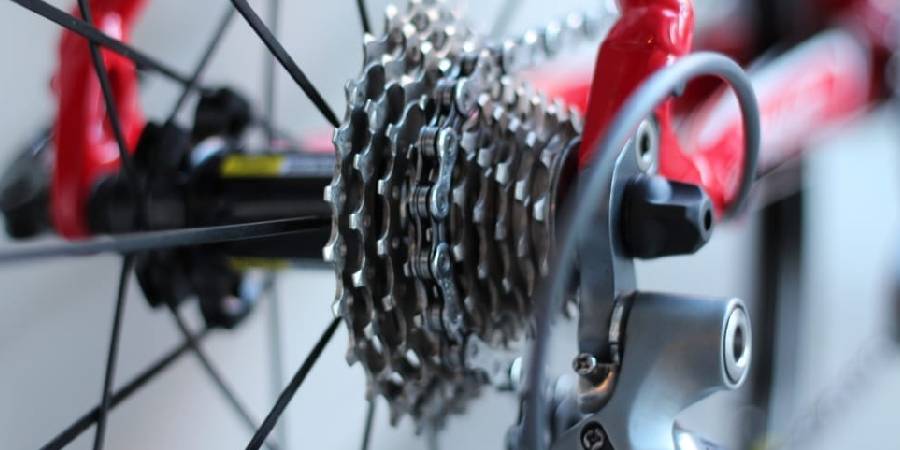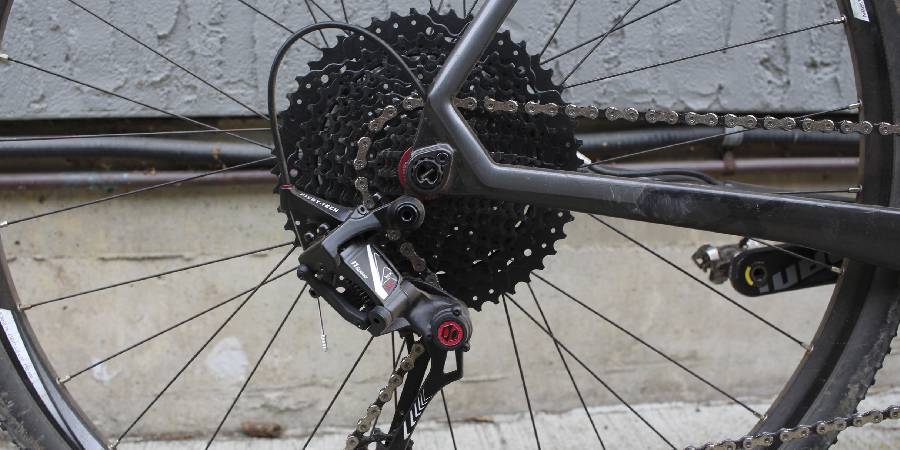How Often Should a Bike Cassette Be Replaced
Introduction
Cycling, a blend of environmental friendliness and fitness, is more than just a hobby or mode of transport it’s a lifestyle. Central to maintaining this lifestyle is the upkeep of your bicycle, particularly the components like the bike cassette.

The bike cassette, a crucial part of the bike’s drivetrain, demands attention to ensure a smooth and efficient ride.
A common question among cyclists is “How Often Should a Bike Cassette Be Replaced?” This article delves into this query, providing a comprehensive guide to understanding, maintaining, and replacing your bike cassette timely.
Understanding the Bike Cassette
The bike cassette is an assembly of sprockets on the rear wheel of a bike, playing a pivotal role in the bike’s gear-shifting mechanism. These sprockets vary in size, allowing for a range of gears that aid in efficient pedaling across different terrains.

The cassette works in tandem with the chain, derailleurs, and pedals to transmit power from the rider to the wheels. As a key component of the bicycle’s transmission system, its condition directly impacts the bike’s performance, making its maintenance non-negotiable for avid cyclists.
Factors Affecting Cassette Lifespan
The lifespan of a bike cassette can be influenced by several key factors:
Riding Frequency and Style
How often and how hard you ride your bike plays a significant role. Regular, heavy use, especially in competitive cycling or mountain biking, can lead to quicker wear.
If you’re someone who cycles daily or enjoys pushing your limits on challenging terrains, your cassette will face more strain and might need replacing sooner.
Maintenance and Cleaning
Taking care of your cassette can greatly extend its life. This includes regular cleaning to remove dirt, grime, and any small particles that can get caught in the teeth of the cassette.
Proper lubrication is also crucial. A well-lubricated cassette reduces friction, which not only makes your ride smoother but also lessens wear and tear.
Environmental Conditions
The conditions under which you ride your bike can affect the cassette. Riding in harsh conditions like wet, muddy, or very dusty environments can cause the cassette to wear out faster.
Water, especially when mixed with dirt, can act as a grinding paste, wearing down the cassette’s teeth. Similarly, exposure to salt, especially in coastal areas or from road de-icing salts, can lead to corrosion and increased wear.
Quality of the Cassette
The material and build quality of the cassette matter a lot. Higher-end cassettes are often made with superior materials and more precise engineering, making them more durable and longer-lasting.
While they might be more expensive upfront, they can be a more cost-effective choice in the long run due to their extended lifespan. On the other hand, budget cassettes, although cheaper, might need to be replaced more frequently.
By understanding these factors, you can take proactive steps to maintain your bike cassette and ensure it lasts as long as possible, giving you a more enjoyable and reliable riding experience.
How Often Should a Bike Cassette Be Replaced
The need to replace a bike cassette is not set in stone and varies greatly depending on several factors. Typically, a well-maintained cassette should serve you well for about 2,000 to 5,000 miles. However, this estimate can change depending on how you use and look after your bike.

Signs of Wear
Keeping an eye out for signs that your cassette is wearing out is crucial. Common indicators include difficulty in shifting gears, the chain slipping on the cassette, or unusual noises from the drivetrain. These signs suggest that the teeth on the cassette are worn down and no longer hold the chain as they should.
Regular Professional Check-ups
Even if you don’t notice obvious signs of wear, getting your bike checked regularly by a professional can prevent problems.

They can spot early signs of wear and suggest if a replacement is needed soon. This proactive approach can save you from sudden breakdowns or performance issues.
Consequences of Not Replacing
If you continue to ride on a worn-out cassette, it can have a domino effect on your bike’s health. A worn cassette doesn’t mesh well with the chain, causing it to wear out faster.
It can also put extra strain on other parts of the drivetrain, like the chainrings and derailleur. These components are typically more expensive to replace than the cassette itself, so a timely replacement can save you money in the long run.
Cycling Environment and Habits
The environment in which you ride your bike can also affect how soon you need a cassette replacement. Riding in rough, muddy, or sandy conditions can accelerate wear. Similarly, if you often ride up hills or put a lot of strain on the gears, your cassette might wear out faster.

Quality of the Cassette and Matching with the Chain
The quality of the cassette also plays a role in its longevity. Higher-quality cassettes, made with better materials, often last longer.
It’s also important to make sure that your chain is in good condition. A worn chain can wear out a new cassette quickly, and vice versa. Some cyclists prefer to replace both the chain and the cassette at the same time to ensure they work well together.
The frequency of cassette replacement depends on how much and how hard you ride, how well you maintain your bike, and the quality of the cassette itself.
By paying attention to the signs of wear and seeking regular professional advice, you can keep your bike in top shape and avoid more costly repairs down the line. Remember, a well-maintained cassette not only ensures a smoother ride but also protects the overall health of your bike.
Benefits of Timely Cassette Replacement
Replacing your bike cassette at the right time offers several benefits that enhance your cycling experience and maintain the health of your bike.
Enhanced Riding Experience
A fresh cassette ensures that your gear shifts are smooth and effortless. When the teeth on the cassette are sharp and well-shaped, they interact with the bike chain more efficiently.
This results in a seamless transition between gears, making your ride more enjoyable, especially when tackling different terrains. You’ll notice a significant improvement in how your bike responds when you shift gears, adding to a more pleasant and controlled cycling experience.
Prevention of Additional Wear
Timely cassette replacement is crucial in protecting other parts of your bike’s drivetrain, such as the chain, chainrings, and derailleur. A worn-out cassette can cause uneven and excessive wear on these components, leading to a need for more frequent replacements or repairs.
By replacing your cassette when needed, you ensure that the entire drivetrain works harmoniously, prolonging the life of all its parts and saving you from unnecessary expenses in the long run.
Safety
One of the most critical aspects of timely cassette replacement is safety. A worn cassette can lead to the bike chain slipping off the gears, especially under high stress, like climbing hills or accelerating quickly.
This slippage can cause sudden loss of power or control, posing a risk of accidents. Keeping your cassette in good condition helps ensure a reliable and safe ride, allowing you to focus on enjoying your journey without worrying about mechanical failures.
Cost-Effectiveness
While replacing a cassette involves some cost, doing it at the right time is a cost-effective strategy in the long run. Ignoring the need for a replacement can lead to more severe damage to other, more expensive parts of the bike.
For instance, a worn cassette can accelerate the wear of the chain and chainrings, leading to the need for their replacement as well. Timely maintenance and replacement of the cassette help avoid these additional costs, making it a wise investment for regular cyclists.
Replacing your bike cassette promptly is not just about maintaining the bike it’s about ensuring a high-quality, safe, and cost-effective cycling experience. Regular checks and understanding the signs of wear can help you decide the best time for replacement, keeping your bike in optimal condition for every ride.
FAQ’s
How Long Do Bike Cassettes Last?
The lifespan of a bike cassette varies, but on average, a well-looked-after cassette can last between 2,000 to 5,000 miles. However, this range depends on factors like your riding style, maintenance routine, and the type of terrain you usually ride on.
Regular riders, especially those who often cycle in challenging conditions like hills or rough trails, might find their cassettes wearing out faster compared to leisurely riders or those who stick to smooth paths.
Can a Bike Cassette Be Repaired?
Typically, once a cassette starts showing significant wear, it’s better to replace it rather than attempt repairs.
The reason is that the teeth on the cassette sprockets wear down in a way that can’t be effectively fixed. Replacing the cassette is a more reliable and safer choice to ensure your bike functions well and avoids potential issues with gear shifting.
Should I Replace a Rusty Cassette?
Absolutely. Rust on a cassette not only impairs its function but can also spread to other parts of the drivetrain.
A rusty cassette can cause poor gear shifting and reduce the efficiency of your ride. Additionally, rust weakens the cassette’s metal, increasing the risk of breakage. Replacing a rusty cassette is important for maintaining the performance and safety of your bike.
Should I Replace the Chain and Cassette Together?
It’s often advised to replace the chain and cassette simultaneously because they wear out at a similar rate. A new chain on a worn cassette, or vice versa, can lead to poor performance and faster wear on both components.
This is because the chain and cassette teeth won’t mesh well if their wear levels are mismatched. Regularly replacing both ensures a smoother ride and can prevent more serious issues with your bike’s drivetrain.
Is It Easy to Change a Cassette?
Changing a bike cassette can be done at home if you have the right tools and a basic understanding of bike mechanics. The process involves removing the rear wheel, unlocking the cassette from the wheel hub, and then installing the new cassette.
It’s crucial to have a chain whip and a cassette lockring tool. While it’s a manageable task for those with some mechanical skills, it’s always a good option to get it done by a professional at a bike shop, especially if you’re not confident in doing it yourself.
Conclusion
The replacement of a bike cassette is a crucial aspect of bicycle maintenance. Understanding when and how often to replace it is key to ensuring a smooth, efficient, and safe cycling experience.
Regular inspections, awareness of wear signs, and understanding the impacts of riding habits and maintenance routines on the cassette’s lifespan are essential. This article has explored how often should a bike cassette be replaced.
By adhering to these guidelines, cyclists can enjoy the benefits of a well-maintained bike, which not only enhances their riding experience but also safeguards their investment in their cycling equipment. Remember, a well-maintained bike is a reliable companion on every journey.






